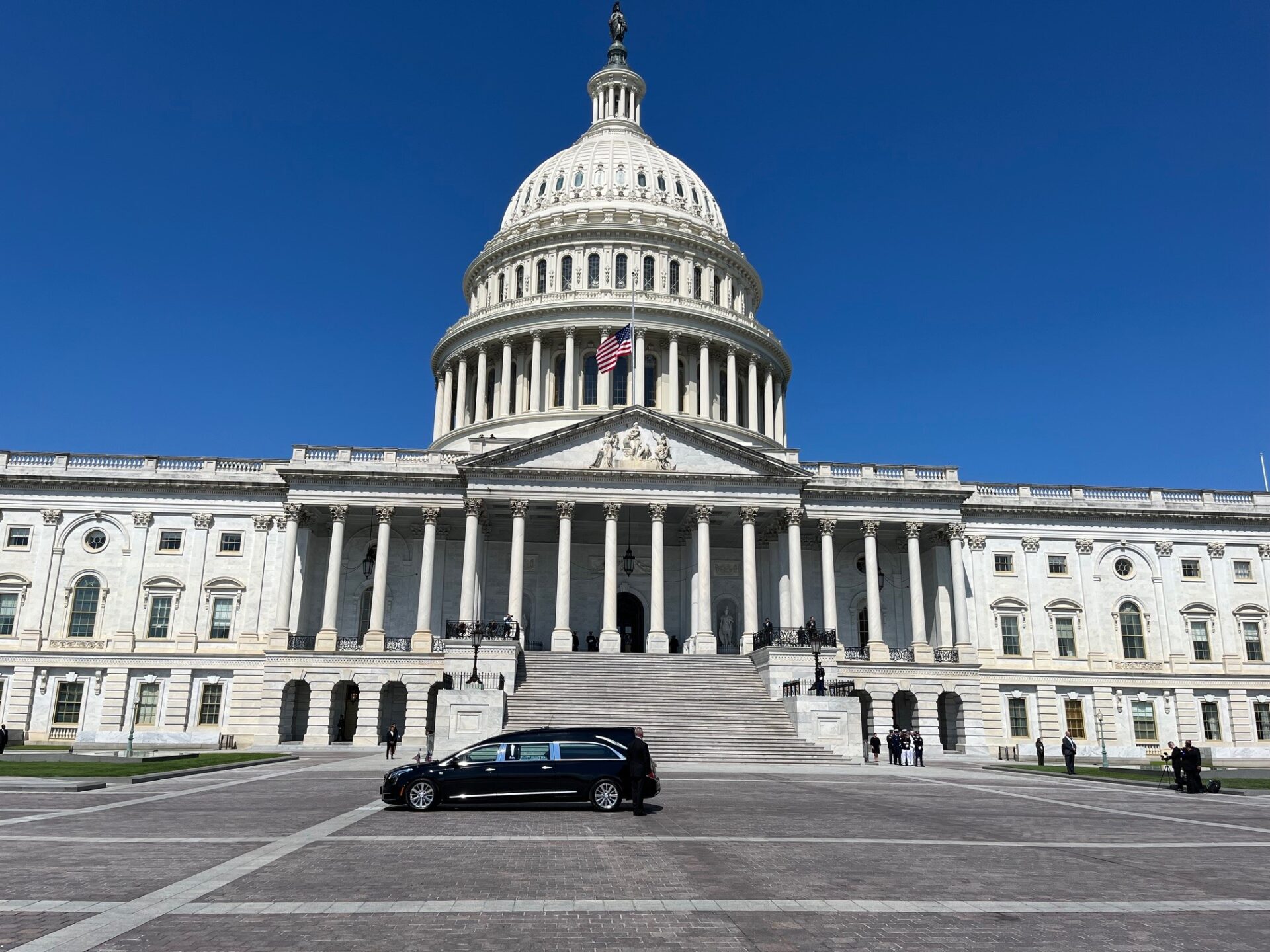The old saying ‘If these walls could talk’ rings true in West Virginia’s House and Senate chambers. And, if asked, those historic marble walls – might also cough a bit.
Looking up in the House of Delegates chamber, the ceiling windows form a distinct, artistic pattern. House assistant doorkeeper Carlo Zorio explained that decades ago, some of those now closed windows did open, and not to let a breeze cool any ‘hot air’ coming from the house floor.
“The windows in the ceiling do open but not all of them,” Zorio said. “It was a way to get the smoke out of this room when they smoked in here.”
Zorio said the delegates’ smoke got so thick it stained the marble walls. He pointed out the old discoloration still on two adjacent wooden platforms.
“They had to open those windows for all that smoke to go out,” Zorio said. “It probably looked like a train burning coal going out in the street.”
When this Capitol building opened in 1932, there were many more cigars than cigarettes smoked in the house chamber. The cigar brands could have been White Owls, an El Producto, an imported Cuban – or some old cheroot.
In the Senate chamber, Assistant Sergeant-At-Arms Grover Miller said the early Senate body was considered the ‘gentlemen lawmakers’ of the state. Miller said on the Senate side, they nearly all smoked cigars. He pointed out the huge upper chamber windows behind the gold lattice – smoke vents that haven’t been opened in years.
“And that would allow the air to flush out the smoke,” Miller said. “And there are windows on the other side that would allow fresh air to come in to help cool off the place.”
What else defines quirky chamber history? The illustrious Robert C. Byrd was elected to the House of Delegates in 1946, and Zorio said he literally left his mark in the chamber.
“We have Mr. Byrd’s initials, yes, his name, marked into his desk,” Zorio said. “I don’t know what he scratched it with, maybe nail clippers. And, he scratched in the years that he served here.”
At first glance, the nearly century-old wire loops left under the Senate gallery seats look to be for stashing old papers or files. MIller said no, giving us the history of the hat holder.
“They would have a place to put their hat with these spring rods here,” Miller said. “So they would sit down and then just below they hung their hats and they would stay blocked and out of the way. And that would take care of their hat and it wouldn’t get messed up.”
Both gentlemen said the stories abound from these historic meeting rooms of old. So, what if these House and Senate chamber walls could really talk?
“If they could talk, we’d all probably have to leave the state,” Zorio quipped.
